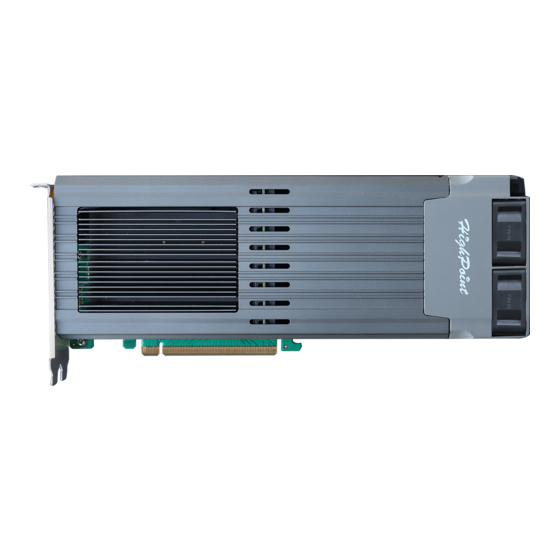SSD7105&7202&7502&7505&7540&7580A&7580B Boot RAID Windows Installation Guide
Prerequisites for a Bootable RAID Configuration
The SSD7202/SSD7105/SSD7505/SSD7502/SSD7540/SSD7580A/SSD7580B controllers
can support bootable RAID arrays. After configuring an array using the UEFI RAID tool, you
can install a Windows operating system to the NVMe SSD's. In order to configure a bootable
NVMe RAID array, you will need the following:
Note: Prior to system installation, please do not connect any NVMe to the motherboard M.2
SLOT to prevent any unexpected situation during the installation process.
1. An NVMe SSD must be installed. You must have at least one NVMe SSD installed into
the HighPoint NVMe RAID controller.
2. A PCIe 3.0/4.0 slot with x8 or x16 lanes. The HighPoint NVMe RAID controller must be
installed into a PCIe 3.0/4.0 slot with x8 or x16 lanes.
3. Your motherboard must have a UEFI BIOS with option ROM settings for third party
devices (such as the HighPoint NVMe RAID controller, optical drives and USB flash
drives). If this is not configured correctly, the system will fail to load the SSD7000/
SSD7500 series RAID controller. Please check the compatibility lists for recommended
motherboards/platforms – these are available from the Documentation sections of the
product category webpages.
4. Secure Boot must be disabled. The UEFI capability of the HighPoint NVMe RAID
controller has not been signed and certified. If Secure Boot is enabled, the motherboard
will not recognize the SSD7000/SSD7500 series controller, and you will be unable to
proceed with installation.
5. Prepare the Windows OS Installation media. You will need an official Windows
installation DVD or flash drive, or access to an official downloadable copy (which will
then have to be burned/transferred to a DVD or flash drive).
6. If you are installing the OS using a DVD/Blu-Ray disc, you will need to Install an
optical drive into the system (such as a DVD-ROM, DVD-RW or Blu-Ray drive).
7. You will need at least one USB flash drive – the UEFI package and driver should be
extracted to the root directory of this flash drive.
8. Remove all other drives during the OS installation process. Make sure only the
SSD7000/SSD7500 series controller, the USB flash drive, and the optical drive are
installed into the system during this procedure. This includes any other USB hard drives,
USB flash drives, memory sticks, or SAS/SATA drives. You can reattach these drives
after the operating system has been successfully installed.
9. Make sure any non-HighPoint drivers are uninstalled for any SSD's hosted by the
SSD7000/SSD7500 series RAID controllers. 3
provided drivers may prevent the controller from functioning properly.
10. For Windows 10/11 users, make sure to Disable Fast Boot.
11. The following are the basic requirements for installing Windows 11 on your
computer. If your device does not meet these requirements, you may not be able to
install Windows 11 on your device; If your device is already running Windows 10, you
can use the
PC Health Check app
rd
party software and manufacturer
to evaluate compatibility.
3

